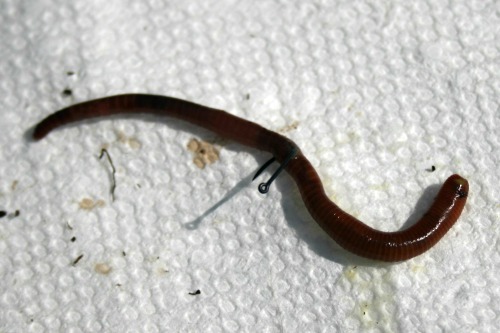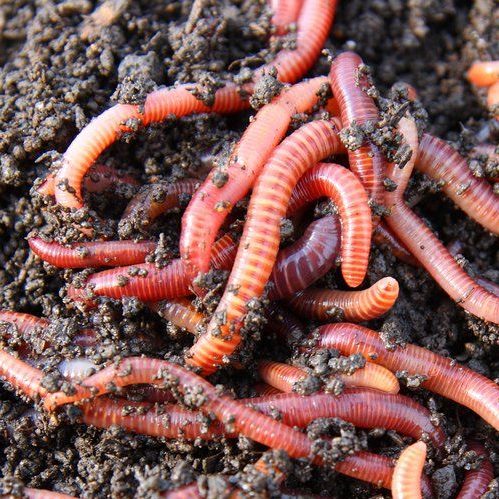Transform Your Lawn with the Expertise of Red Wiggler Express Lawn Care Professionals
Transform Your Lawn with the Expertise of Red Wiggler Express Lawn Care Professionals
Blog Article
Red Wigglers: The Unsung Heroes of Organic Waste Recycling
Red wigglers, or Eisenia fetida, serve as critical representatives in the organic waste recycling process, transforming thrown out materials right into important vermicompost. Their effective break down of organic issue not only enhances dirt high quality yet also adds to sustainable waste monitoring methods. As the globe significantly looks for services to fight waste accumulation and boost farming efficiency, comprehending the role of these worms becomes crucial. What devices enable them to prosper in compost atmospheres, and exactly how can they be successfully utilized in both household and industrial setups? Exploring these questions reveals the wider ramifications of vermicomposting in our environmental landscape.
What Are Red Wigglers?
The exceptional resilience of red wigglers, medically called Eisenia fetida, underscores their crucial function in organic waste recycling. These tiny, reddish-brown earthworms are usually located in disintegrating raw material, such as compost heap and manure stacks. Lake Hickory Bait. Unlike various other earthworm species, red wigglers grow in nutrient-rich environments and are very efficient at damaging down organic materials, making them essential for vermicomposting

(Lake Hickory Bait)Along with their duty in waste decrease, red wigglers add to soil health and wellness by enhancing soil framework and oygenation through their tunneling tasks (Lake Hickory Bait). Their visibility in composting systems not only improves decay prices but additionally advertises a lasting strategy to lose administration, illustrating their significance in environmental conservation efforts
Benefits of Composting With Worms
Composting with worms, especially red wigglers, provides countless benefits that boost both waste monitoring and dirt wellness. First, these worms efficiently break down natural waste, transforming it right into nutrient-rich vermicompost that improves dirt. This process speeds up decay, permitting a faster recycling of kitchen scraps and other natural products contrasted to typical composting approaches.
Furthermore, the vermicompost created by red wigglers is bristling with beneficial microorganisms, which aid boost dirt structure, aeration, and dampness retention. This improves the general health of plants, promoting strenuous development and enhanced yields in yards and agricultural settings. The usage of worms in composting reduces the production of greenhouse gases, such as methane, adding More hints to a much more lasting waste administration system.

Exactly How to Start Vermicomposting
Establishing a vermicomposting system is an uncomplicated process that can yield considerable benefits for both waste administration and dirt enrichment. To start, pick an ideal container, such as a plastic container or wood box, with ample air flow openings to make sure correct air movement. The measurements should ideally be around 2 feet by 3 feet, allowing ample space for the worms to thrive.
Next, prepare bedding material, which can contain shredded newspaper, cardboard, or coconut coir. This bedding should be moistened to create an ideal environment for the worms. As soon as the bed linens remains in location, introduce red wigglers (Eisenia fetida) into the bin, generally around one pound of worms for every square foot of area.
Complying with the placement of worms, include organic waste, such as fruit and vegetable scraps, coffee premises, and crushed eggshells. With these actions, you will efficiently initiate a vermicomposting system that adds to lasting waste monitoring and enriches your soil.
Keeping a Healthy Worm Bin
(Lake Rhodhiss Bait)Keeping a worm container growing requires normal attention and treatment to guarantee the wellness of the red wigglers and the effectiveness of the composting procedure. Proper upkeep begins with checking the moisture degrees; the container ought to perspire but not soaked. An excellent policy of thumb is to keep a consistency comparable to a wrung-out sponge.
Oygenation is important too. Gently mixing the bed linen and food scraps every couple of weeks avoids compaction and makes sure that all worms have accessibility to oxygen. Additionally, it is necessary to feed the worms suitably. A balanced diet plan of fruit and veggie scraps, coffee grounds, and crushed eggshells ought to be used in small amounts to avoid overfeeding, which can cause smells and parasites.
If the bin comes to be also warm or chilly, the worms may become worried. By faithfully taking care of these variables, one can preserve a robust and productive worm container.
Influence on Sustainable Living
The successful upkeep of a worm container not only profits the wellness of red wigglers however also contributes significantly to lasting living methods. By recycling natural waste, such as kitchen area scraps and yard particles, red wigglers assist divert significant quantities of material from land fills. This reduction in waste not only lowers greenhouse gas discharges but additionally reduces the environmental worry connected with waste management.
In addition, the castings generated by red wigglers act as a nutrient-rich organic plant food, enhancing dirt health and advertising plant growth. This all-natural option to chemical plant foods supports lasting agriculture and horticulture practices, minimizing reliance on artificial inputs that can damage environments. In addition, worm composting fosters recognition of waste management, urging individuals and neighborhoods to take on more lasting habits.

Final Thought
In recap, red wigglers offer as important factors to natural waste recycling through their reliable decomposition of natural materials. By incorporating vermicomposting right into waste management methods, people and neighborhoods can substantially minimize waste while advertising ecological sustainability.
Report this page